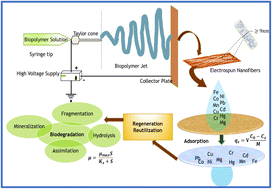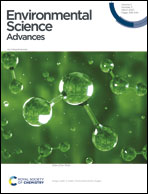Fabrication of biodegradable fibrous systems employing electrospinning technology for effluent treatment
Abstract
The continuous industrialization with the evolution of humankind and the rapidly increasing population have led to undesirable environmental changes due to anthropogenic activities, harming the environment, especially the aquatic ecosystem. The constant discharge of different toxicogenic entities in the aquatic ecosystem globally poses one of the most significant risks to living organisms, causing virulent diseases and even death. With technological advancements, the urgent demand for pure water devoid of harmful toxins and having a sustainable ecosystem have become paramount concerns. Among the various technologies, electrospinning, which is an efficient and facile method of fabrication, has received significant attention from various research domains, especially in wastewater treatment. This is ascribed to the enhanced efficacy, structural properties, and augmented performance of the fabricated nanostructured geometry, presenting a new facet of nanotechnology. Currently, although various techniques are applied for the fabrication of materials for wastewater treatment, the electrospinning of biopolymers is emerging as a sustainable fabrication system for effluent treatment, which exhibit the advantages of biodegradability (∼ at 9–32 °C in seawater), accessibility, porosity (∼80–90%) and biocompatibility. In the present review, we comprehensively investigate different toxins and their hazardous and prevailing effects on living species, and the advantages and application of various electrospun biopolymers for effluent removal. Also, we highlight the different mechanisms, the application of biopolymers in sorption, and the kinetics and isotherms associated with fabricated nanofibers for a better understanding of electrospun biopolymers as adsorbents.

- This article is part of the themed collections: 2025 REV Collection from Environmental Science: Advances , Environmental Science Advances Recent Review Articles, Outstanding Papers 2023 – Environmental Science: Advances and Topic Collection: Wastewater Treatment


 Please wait while we load your content...
Please wait while we load your content...